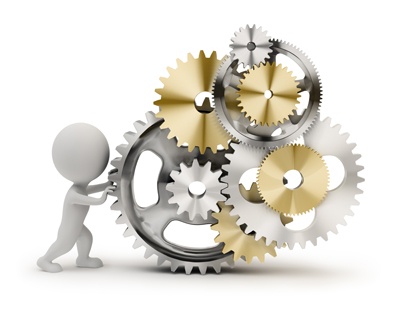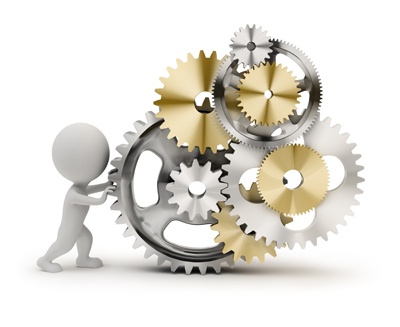5 Benefits of Simplicity for Paperless Manufacturing
Technology doesn’t have to be complex, no matter what some manufacturing software suppliers tell you. There’s a conundrum in the perception of...
3 min read
David Oeters : August 12, 2014 at 7:00 AM

In manufacturing, a few seconds can mean the difference between success and scrap. A single error can snowball and lead to missed shipping deadlines, lost profit and angry customers. Consistency and repeatable processes is the key to success, while complexity leads to errors, waste and worse.
Push technology systems, which automatically deliver contextually relevant data to the shop floor user, and have significant benefits for manufacturers. Despite this, many companies still rely on less efficient pull technology systems for their MES and paperless manufacturing. Pull systems require the user to request the data each time, adding complexity and introducing opportunities for errors.
Pull technology requires a specific user request for the release of data. Typing the URL or clicking the link of a web page is an example of pull technology at work. The user requests information using specific input and the information is delivered. Logging in to a work station terminal, following system-based procedures, sorting through the work of the day, and then requesting the work instructions is an example of pull technology.
Pull technology can be error prone and requires effort and time from the user. With some complex or overly engineered MES, this can be significant time, unnecessary effort, and any errors in the input can be costly. Users request the wrong work instructions, or unapproved plans are released. Template-based systems utilize pull technology. Users input data in specific fields, and the system dictates the work process. This introduces unnecessary complexity and additional training. The effort needed to log in and find the work instructions is non-value added time. With many systems, unnecessary steps are added simply to suit the system or accommodate system-based processes. There is a tradeoff between making the solution easier to program and making it more efficient for the manufacturer using the software.
 Push Technology
Push TechnologyWith push technology, data is automatically delivered to the user, either on a set schedule or when a specific circumstance or trigger is met. An automatic calendar update is an example of push technology. With automated information transmission, errors are eliminated. The correct information reaches the right people at the right time in the process, every time. Complexity is reduced, since non value-added procedures are removed. With the right operation being sent at the correct time, you have better control over the process.
An example of push technology on the shop floor could include an RFID badge, barcode or fingerprint scanner keying a user to a work station. With a swipe of the barcode or the RFID, the system is aware of the user at the station, and the prepared work is pushed to them. Before the day begins, new orders have been pulled from the ERP or MRP systems, the work instructions assembled and routed. Staff prepares the kitting and delivers parts, tools and materials to the work station. The worker arrives can begin work moments after they arrive.
As the process becomes more automated, using procedural enforcement, repeatable processes, automated data collection, and automatic validation of tolerances, the shop floor can now focus on value-added tasks such as eliminating errors and improving production. The administrative tasks such as verification of processes and data collected, while necessary, add less value and can be automated. Push technology automates the administrative work to optimize production processes and profits.
There are shop floor solutions, MES and paperless manufacturing systems, on the market designed to deliver the benefits of push technology when appropriate. As you evaluate potential solutions, ask a few key questions of the system:
The goal of a paperless manufacturing system should be to synchronize the people, information, and materials on the shop floor. Utilizing push technology in the system ensures a tighter synchronization, getting the right information to the right people at the right time with fewer errors. It’s another way you can ensure you’re maximizing the benefit of your new shop floor system.
Questions, or want to see how paperless manufacturing can improve production and remove errors on your shop floor? Give us a call. We’re happy to help.

Technology doesn’t have to be complex, no matter what some manufacturing software suppliers tell you. There’s a conundrum in the perception of...

1 min read
Paperless manufacturing and the digital shop floor are changing manufacturing for the better, but there are still companies reluctant to embrace the...

Paperless Manufacturing Systems can Quickly and Easily Deliver Even More Benefits Than You May Think By David Oeters, Corporate Communications with...